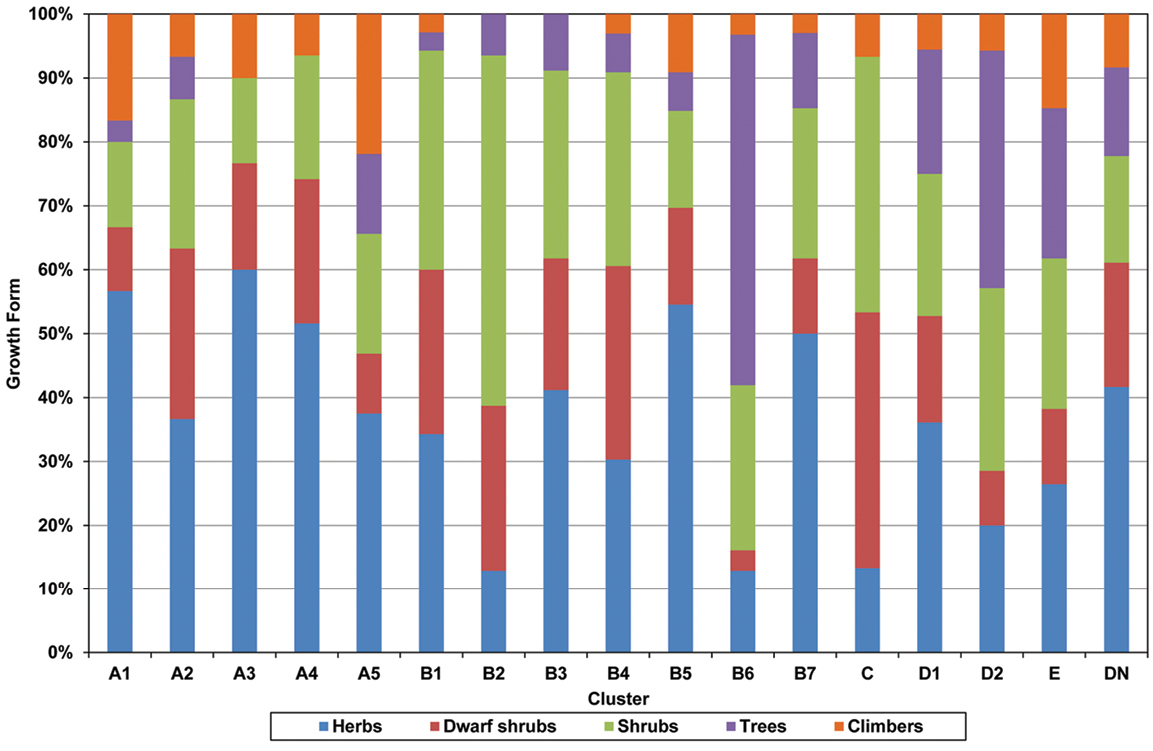
|
||
|
The growth forms of key species recorded in leguminochoria (A1–E) of southern Africa. Growth forms are defined as: 1 herb is a small, non-woody seed-bearing plant in which the aerial parts die back at the end of each growing season 2 dwarf shrub is a plant smaller than a shrub which produces wood at its base and has abundant growth branching upward from the base, the upper stems dying back at the end of each growing season 3 shrub is a perennial woody plant less than 10m tall which branches low or near ground level into several main stems although it has no clear trunk 4 tree is a woody plant which grows more than 10m tall, characteristically it has one main stem and 5 climber is a plant with aerial tendrils which it uses to attach itself to a host or surface for support (Germishuizen and Meyer 2003). DN: diagnostic species are species with occurrences of 70% or higher. The leguminochoria are termed A1 Southern Afromontane A2 Albany Centre A3 Northern Highveld Region A4 Drakensberg Alpine Centre A5 Coastal Region B1 Arid Western Region B2 Lower-rainfall Cape Floristic Region B3 Central Arid Region B4 Generalist Group B5 Summer Rainfall Region B6 Northern & Northeastern Savannah Region B7 Kalahari Bushveld Region C Higher-rainfall Cape Floristic Region D1 Central Bushveld Region D2 Subtropical Lowveld & Mopane Region E Northern Mistbelt. |